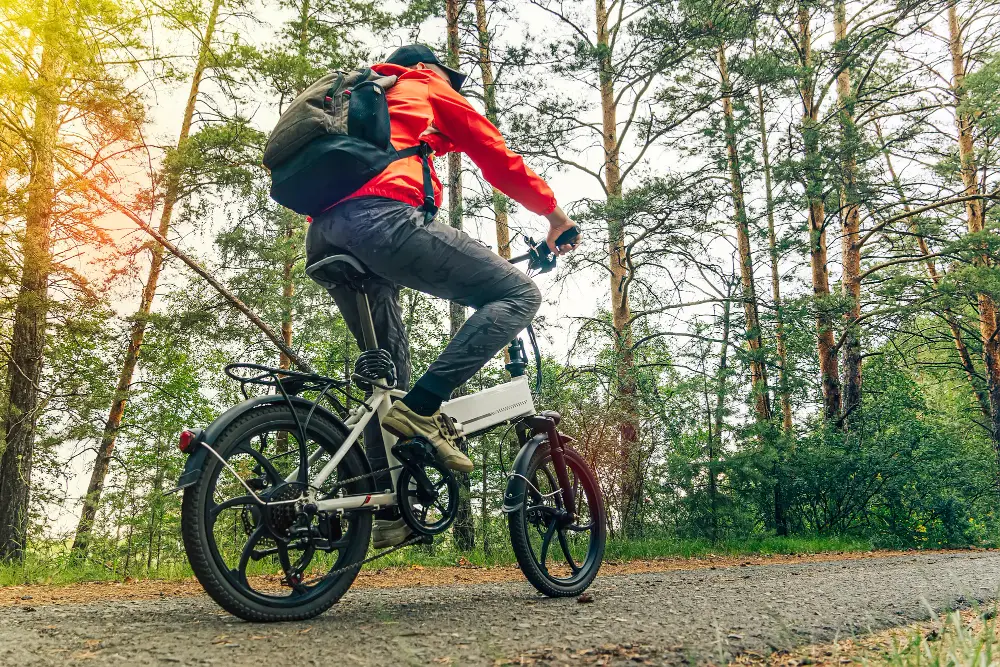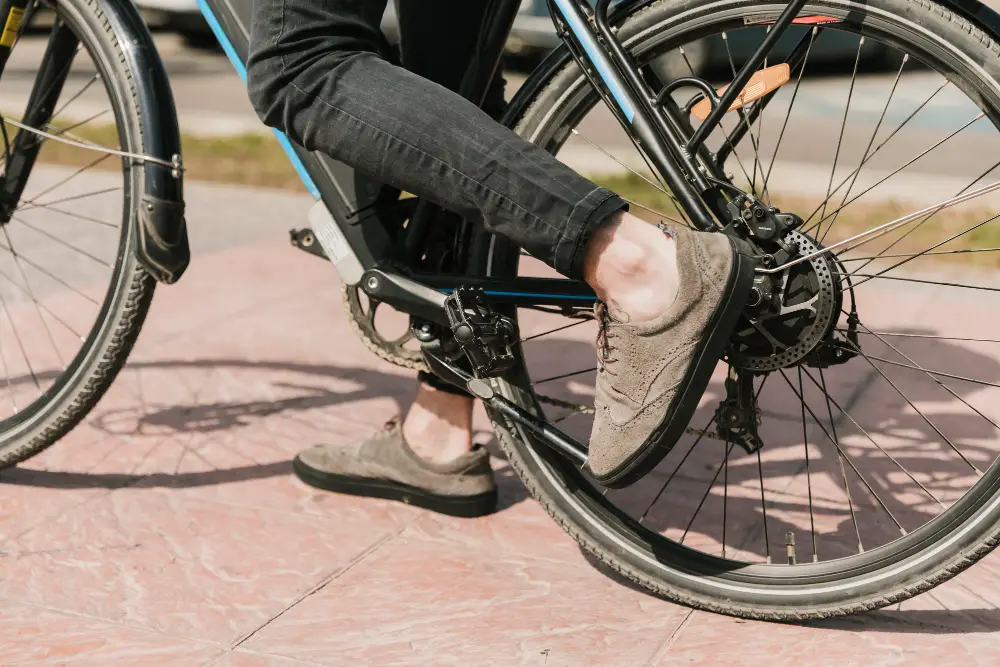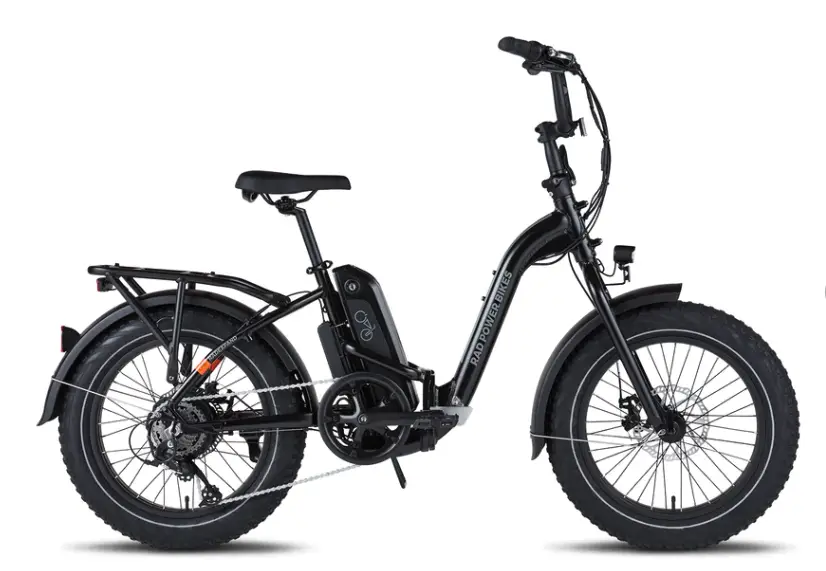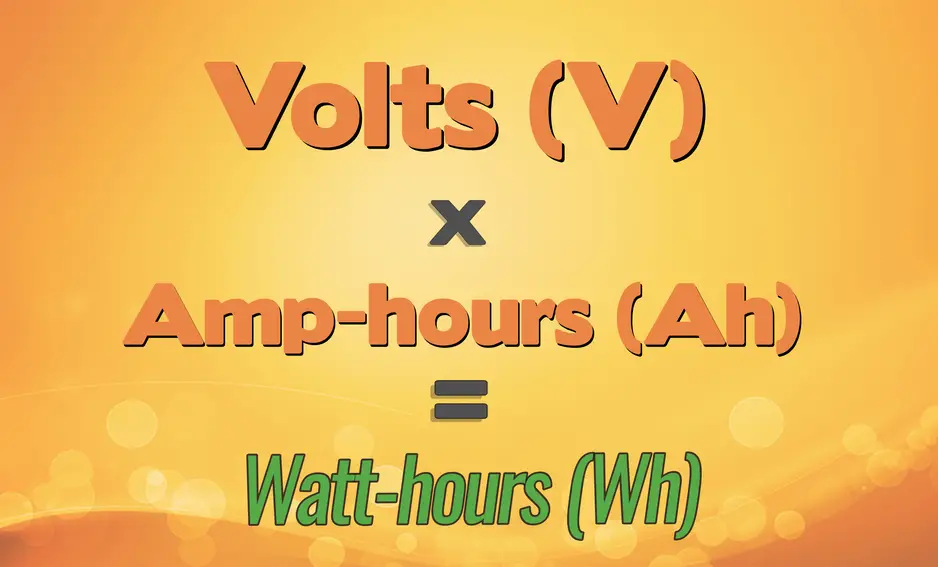E-bikes have a lot of benefits, such as reducing your carbon footprint, saving you money on gas and parking, and getting you to work faster. But one thing that might trouble you is the worry over how far you can ride an electric bicycle before you lose the battery charge. After all, you don’t want to get stuck miles from home with a heavy e-bike!
In general, an e-bike can go between 15 to 100 miles (24 to 160 km) on one charge, depending upon the battery’s power and capacity as well as your riding style. When considering the range of your e-bike, you should think about how much you are pedaling versus using the throttle. You’ll get the longest range while pedaling, but you’ll get the minimum range if only using throttle.
In this article, I’ll discuss how pedaling and other factors affect the range of an e-bike. I’ll also show you the range difference between when you pedal and when you don’t, and I’ll tell you what to do to ensure that you get the most miles out of your electric bike, including taking care of your batteries.

How Far Can an E-Bike Go Without Pedaling On One Charge?
Typically, an e-bike can go between 15 to 22 miles (24 to 35 km) without pedaling on one battery charge. However, the more you pedal, the further you can go. So, you’ll have to pedal a bit if you want to make your battery last on a longer ride.
Still, some e-bikes have a feature called throttle mode that allows you to maximize your battery life and ride without pedaling.
In throttle mode, the motor in your e-bike is activated by a handlebar that can give you on-demand power. Throttle mode works similarly to a gas-powered scooter or motorbike. If you have a twist throttle, you simply use your wrist to twist it. However, you might also have a thumb throttle in which you push a lever with your thumb to give it a burst of speed.
The Advantages of a Throttle
Compared to pedaling, which requires extra effort from the rider, the throttle gives you a speed boost on demand and a much-needed rest if your legs are getting tired. Electric bikes with a throttle can be helpful in certain situations such as:
- When you are stuck on a steep hill.
- When you need to maneuver around obstacles.
- When you need to move through or around cars at a comparable speed
- When you want to catch up with your cycling companions.
The throttle provides relief if riders cannot pedal or are just looking for a quick break. However, keep in mind that this isn’t available on all e-bikes. So, check whether this feature is available on the brand and model you’re thinking of buying. Or consider adding a throttle to your electric bicycle.

How Far Can an E-Bike Go With Pedaling on One Charge?
An e-bike can generally go between 22 to 50 miles (35 to 80 km) with pedaling on one charge. Riders can increase this range by considering when and where they ride their electric bicycle.
Factors, including rider weight, cold weather, terrain, and the steepness of the location, will affect how long a lithium-ion battery lasts.
The truth is, you’ll always get more range out of your e-bike if you give it a hand (or foot). And, if you pedal consistently on a very flat, smooth path, you may get more than 50 miles (80 km) out of a typical battery.
For example, Rad Power Bikes specifies that my RadMini e-bike (now RadExpand) can get over 45 miles on a single charge with its 48V 14Ah lithium-ion battery. I’ve tested this and found that I can actually get over 55 miles if I pedal consistently on a mostly flat surface without using the throttle often.

How Pedaling Affects the Range of an E-Bike
It’s essential to understand how pedaling affects e-bike range to get the most out of your ride.
Pedaling makes e-bikes go further. The more you pedal, the more energy you generate and the farther the electric bike will go without recharging the battery. So, the range of an e-bike is directly related to how hard you’re willing to pedal.
Still, electric bicycles have a facility that means maximum effort isn’t necessary for the upper end of the e-bike range. That means that you’ll always have an easier time pedaling as long as you still have some charge left.
Pedal Assist Uses Pedaling For More Power
Pedal assist is a mechanism that uses cadence sensors to measure how hard you’re pedaling.
As you pedal harder, the electric motor provides more power. Thus, you don’t need to work as hard to ride your e-bike as compared to a regular bike. Ultimately, the more you pedal, the faster you’ll go, the more energy you’ll generate, and the longer your battery will last.
As a rule of thumb, if you’re riding your e-bike with pedal assist, it’ll go much further than riding only in throttle mode. Pedal assist allows your electric bike to go further and faster with less effort on your part. Pedal assist gives significantly better value for money when compared to non-pedal-assisted bicycles.
Does Pedaling an E-Bike Charge the Battery?
Pedaling an e-bike typically does not charge the battery. However, some types of electric bike models use regenerative braking to charge. With this type of braking system, the power created by your pedaling will be regenerated and reused.
However, for most electric bicycles, you’ll have to plug in the battery regularly to charge it for the next ride.
Check out the RadCity E-Bike that allows for regenerative braking if this is important to you!
Factors That Affect the Range of an Electric Bike
Many factors other than pedaling can impact the range of your electric bike ride, so it’s important to understand how an e-bike battery works as well as a few other things before you set off on any long-distance rides.
Battery Capacity
The battery capacity refers to the size of the battery in your electric bike. The exact range of an electric bike depends on how large the battery is and how much power it can provide. Battery capacity is measured by Amp-hours (Ah) and is what affects how far you can ride your e-bike on a single charge.
Volts (V) on a battery relate to how fast your e-bike can go. Multiply Volts and Amp-hours and you’ll get the total energy output, otherwise known as Watt-hours.

Essentially, the battery is the most critical part of an electric bike. An e-bike with a larger capacity battery, such as one having 500 watt-hours as compared to only 350 Watt-hours, lets you ride longer distances before needing to recharge it again.
An e-bike that goes up to 350 watt-hours should be enough for shorter trips around town or commuting in your city where charging stations may be difficult to find.
It’s important to note that most electric bikes have an LCD that shows the range of the e-bike’s battery in real-time. The LCD helps you know when to charge your battery again to avoid running out of charge when you are riding far from home.
It’s possible to get an electric bike with a bike computer that helps you calculate how much power your e-bike’s motor requires for each assist level.
If you’re going on a long ride and need to know how much energy your bike will use, it can be helpful to have an e-bike computer that tells you what assistance level your bike is using at any given time.
Riders concerned with the run time of their batteries can check out this table provided by E-Bike Kit:
| Battery Energy (Watt-hours) | Load (Watts) | Run Time (Hours) |
| 500 | 250 | 2 |
| 500 | 500 | 1 |
| 500 | 1000 | 0.5 |
Terrain
When riding downhill or on flat terrain, your electric motor is helping you move forward instead of hindering you by taking energy. The e-bike’s motor lets you go faster, so you expend less energy to go a certain distance.
Therefore, if you’re riding downhill or on flat terrain and use a high assistance level, the battery will last longer than when hill climbing or on rougher terrain.
Weight Resistance
The weight of the rider and the e-bike’s weight both contribute to how fast you can go and the overall battery life. The heavier you are, the harder you need to pedal or use your electric motor to keep at a consistent pace. This means that you’ll also reduce range more quickly if you choose not to pedal as hard on your own.
The weight difference between an e-bike and a regular bicycle also matters. An e-bike weighs more than a standard bicycle by at least 20lbs (9kg) or more, depending on its configuration, features, and battery size. Therefore, there’s a lot of weight resistance which will make it more difficult to get your e-bike moving, especially if you don’t use any electric pedal assist or throttle.
Gear Shifts
Electric bikes behave differently than regular bikes and will require adjustments to your riding style accordingly.
One of those adjustments includes changing non-electric gears if your e-bike has them. It helps to shift gears at the appropriate time because lower gears will allow you to go further on less battery power. Also, high gear settings may not get you up hills or provide enough speed on certain types of terrain like gravel roads or dirt trails.
Here’s how to use the gears on e-bikes!
Weather Conditions
Using an electric bicycle in a tailwind will increase the range that it can achieve. The energy of the wind propels the electric bike without increased power from the motor or the rider which enables it to cover more distance.
However, harsh weather, such as wind, rain, snow, and sleet, can work against the battery and how far you can go on a single charge.
Temperature also plays a vital role in e-bike range by reducing the amount of energy stored in your battery and limiting how far you can go.
What e-bikes have the longest range? Find out here!
How To Improve the Range of Your E-Bike
Many riders struggle with the range of their electric bike. A poor riding range can be a severe problem for those who need their electric bicycle for long distances.
There are several things that you can do to improve the range of your e-bike, and these include:
Maintain the E-Bike Properly
The most crucial thing to do before you go out for a ride is to make sure that your e-bike is in good working order. The maintenance tasks include:
- Ensure that the electric bike is clean and well-lubricated.
- Keep the tires pumped up.
- Monitor the e-bike for broken parts or anything that has come loose.
- Store the battery in a cool, dry place.
- Make sure that you keep up to date on all software updates to the e-bike.
For some more tips on how to maintain your electric bicycle, check out this video from GCN Tech.
Don’t Overuse the Throttle
Using the throttle quickly reduces an electric bike’s battery life. And though you can use the throttle exclusively (making it act more like a moped), you simply won’t get as far as only using pedal assist.
Plus, throttle often causes unnecessary acceleration. You can tell this by noticing how much battery life you have left on your e-bike when going up a steep hill or starting from a dead stop. If you use the pedal assist option, you’ll notice that there’s no need for more input and power to get up steep hills as soon as your legs start moving.
Use Regenerative Brakes
Regenerative brakes are a great way to save some battery power when coming to a stop. You can use them in conjunction with the pedal power or throttle (depending on your e-bike).
Regenerative brakes create energy when you apply the brake. The brakes help charge your battery and save some of that valuable power for future use.
The downside? It can cause a slight delay in stopping time because they work by slowing down or reversing the motor temporarily before engaging with traditional friction-based braking systems to bring you to a complete stop.
Keep a Spare Battery
Most high-end electric bikes come with a battery that you can remove and charge separately. Removable batteries are a great way to prolong your riding time and ensure you have enough power to finish your ride.
The best way to charge a spare battery is by using the main power outlet in your home or office. You might charge it overnight if you’re taking a long ride the next day.
Charging your battery regularly will ensure you get the most out of your e-bike (and not leave you stranded). Still, it’s always a good idea to invest in a second battery for longer rides. You can even purchase an extra battery charger to charge it before every ride.
Considerations for Carrying a Spare Battery for E-Bikes
The best way to carry your spare battery is by using a purpose-made battery bag. A bag will ensure that the battery is well protected, and you won’t have to worry about water or dirt getting into the terminals while you are riding.
Battery bags are necessary for spares since they provide perfect protection and keep the terminals safe. Apart from this, you’ll also be able to store different spare parts for your electric bike in just one place.
I suggest looking for a bag made from material that is easy to clean and has straps or a handle so you can carry it with you if needed.
If you are looking for a bag to carry your spare battery for your electric bicycle, as well as bike tools and other incidentals, here’s a highly recommended Bike Trunk Bag on Amazon. The waterproof material makes it ideal for transporting your battery while you’re on the move.
Add a Second E-Bike Battery in Parallel
You can also add a second battery to your e-bike so that you don’t run out of charge on long rides. Discover here how to add a battery in parallel.
Use Portable Solar Charging Panels
Do you solar charge your home or pool? You can use the sun to charge your bike too!
You can add small, foldable solar panels directly to your e-bike if you’re willing to carry the extra weight. Read how to add a solar system to your bike, as well as find out about alternative solar charging options.
Rebuild an Old E-Bike Battery
If you’ve been riding your e-bike for a while, you may not be able to ride as far on a single battery charge as you used to. When you’re no longer able to charge your battery or it has been damaged, you can consider repairing or rebuilding it.
Learn how to rebuild an electric bike battery in one of my other articles.
Conclusion
Pedal power is one of the most significant factors that affects how far an electric bike can go on a single charge. E-bike pedal assist and/or throttle can help you when you need a rest or when you need to get to your destination quickly.
Other factors that affect an electric bicycle’s range on a single charge include:
- Battery Amp hrs
- Rougher terrain
- Constant hills
- The combined weight of the bike and the rider
- Correct gear shifting
- Windy, wet, or cold weather
Riders who want to improve the range of their e-bike can do so by keeping up with basic maintenance and traveling with a spare battery.
Riders should keep extra batteries in a cool, dry, waterproof place to avoid damage.
Other Ideas to Help Keep Your Battery Charged:


